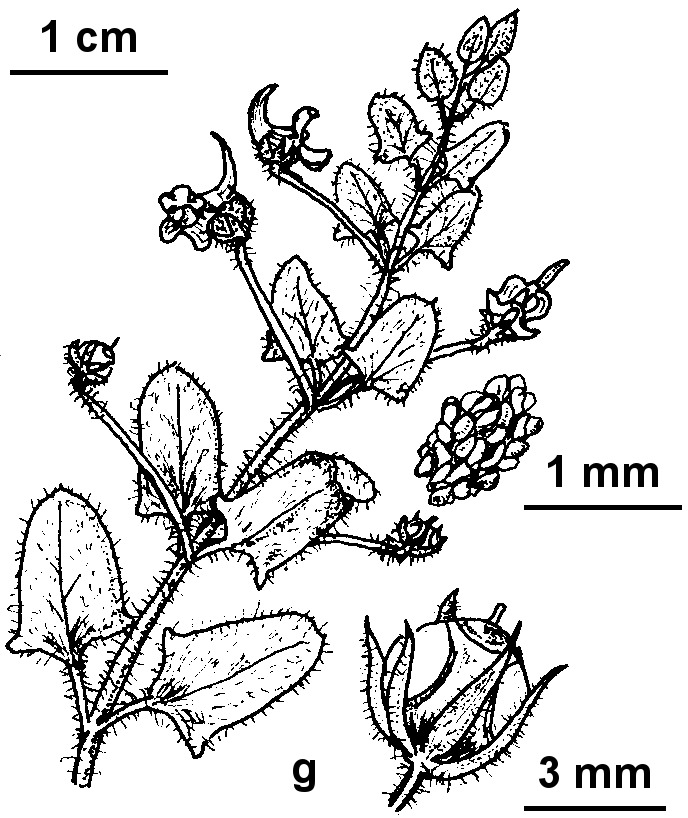Kickxia commutata subsp. graeca
(Bory & Chaub.) R.Fern.Procumbent perennial, villous or hispid with eglandular and shorter glandular hairs. Basal leaves broad-ovate, 8–20 mm long, 8–16 mm wide, apex short-acuminate, base mostly hastate to sagittate, margins toothed; upper leaves ovate-hastate to ovate-sagittate, 3–8 mm long, 2–6 mm wide; shortly petiolate. Pedicels spreading, abruptly bent at apex, 8–30 mm long, glabrous. Calyx 2–6 mm long, segments fused only at base, not united in fruit; corolla 5–8 mm long, blue, violet or lilac (rarely white), except for the palate which is white spotted with purple, spur 7–8 mm long, curved. Capsule globose, 2–2.5 mm long, brown-yellow, thick-walled, eglandular-pubescent, becoming glabrous; seeds tuberculate. Flowers Oct.–Jun.
Wim, CVU, GGr, DunT. Native to Mediterranean region. Known in Victoria by a 1969 collection from near Halls Gap.
Variation on the single Victorian specimen in pedicel length relative to subtending leaves encompasses both subspecies recognized in Europe (subsp. commutata and subsp. graeca). However, the specimens have still-developing branches with tiny leaves subtending long pedicellate flowers and fruits typical of the latter subspecies, which is common in the Adelaide region of South Australia. Subsp. commutata is not known from Australia.
Barker, W.R. (1999). Scrophulariaceae. In: Walsh, N.G.; Entwisle, T.J., Flora of Victoria Vol. 4, Cornaceae to Asteraceae, pp. 483–528. Inkata Press, Melbourne.
 Spinning
Spinning

